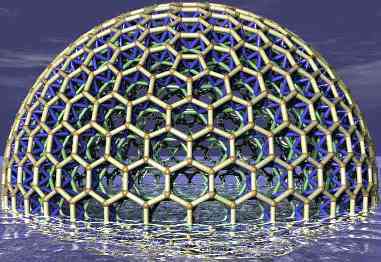
HexDome
Hexagonal Geodesic Domes
Tensegrity tetrahedron
Here are some efforts of mine to construct a "floating" tensegrity tetrahedron.
I tried to, in priority order:
- Minimise number of struts;
- Minimise number of cables;
- Minimise cable lengths;
- Minimise strut lengths;
- Retain a stable structure;
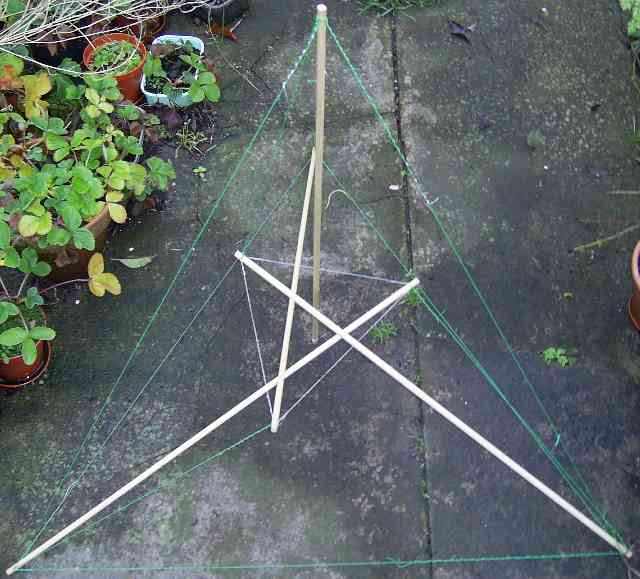
Side view
|
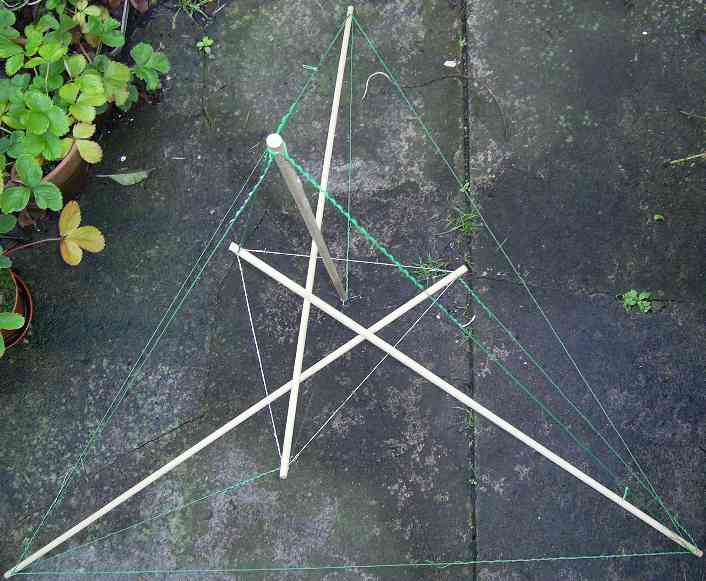
Plan view
|
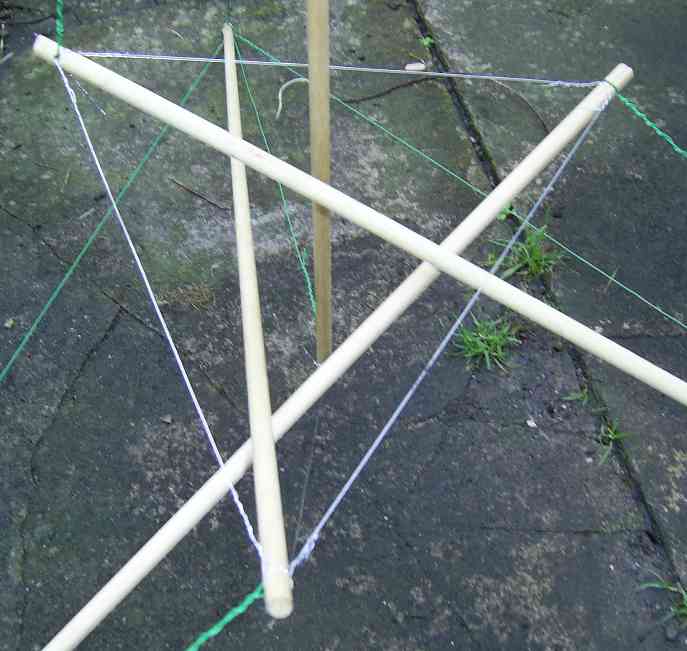
Close up
|
This model has four struts and sixteen cables.
Six cables are long, four are of medium length, and six are short.
It may be possible to eliminate some cables - if I relax the constraint which stops
the struts from penetrating through the sides of the tetrahedron.
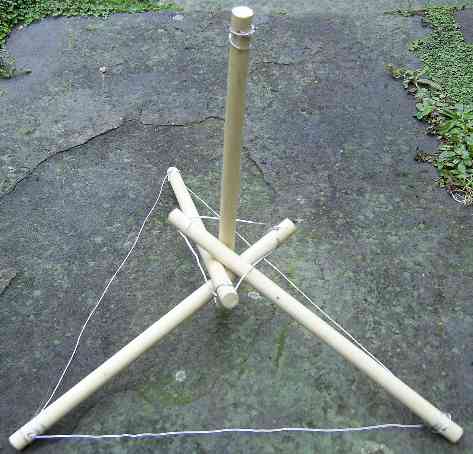
First attempt
|
Here's a prototype I built originally, with twelve cables.
It was not a true floating tensegrity.
Attempts to scale it into one directly failed - since the
struts insisted on touching one another.
Tim Tyler |
Contact |
http://hexdome.com/
|